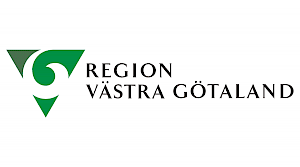Chatbot examples can be found across a wide range of industries, from banking to healthcare. As businesses and organizations continue to prioritize improving customer experience and streamlining operational processes, chatbots have become an increasingly popular tool. In this article, we'll explore six chatbot examples across different industries to showcase the diverse ways in which chatbots are being used.
Banking & Credit Unions
Automate core banking services
Chatbots make it possible for financial institutions to automate a wide range of core services, such as opening a new account, reporting a lost card, checking account balance, and processing mortgage payments.
By using a chatbot powered by conversational AI, customers can easily access these services through a friendly, conversational interface without the need for human intervention. This allows customers to have agency over the process, enabling them to complete tasks quickly and efficiently without having to wait for assistance from a human operator.
Instant, personalized service
With user authentication, a banking chatbot can provide personalized and proactive responses tailored to individual customers' needs. For example, a chatbot could provide personalized recommendations for financial products like credit cards or home loans based on a customer's banking history. As the chatbot continues to interact with customers, it can learn and improve over time, providing increasingly accurate and relevant responses.
Onboarding and internal support
By combining a chatbot with robotic process automation (RPA), businesses in the banking industry can automate time-intensive back-office processes, such as document management and contract review. This can help to increase employee productivityand streamline operations, ultimately driving growth for the business.
Additionally, chatbots can be used to onboard new staff members by providing training and knowledge base content directly, allowing new employees to quickly and easily learn about the organization and its processes. This helps to speed up the employee onboarding process and improve the overall efficiency of the organization.
Example: DNB
Challenge: Norway's largest bank, DNB, needed to scale its customer support to handle high volumes of incoming chat traffic.
Solution: DNB routed all customer service chat traffic through a conversational AI chatbot.
Result: The chatbot was able to automate over 50% of all incoming chat traffic within 6 months. It now accounts for 20% of all customer service automation, including channels like phone and email.
By implementing a chatbot powered by conversational AI, DNB was able to improve the customer experience and drive growth for the business. The chatbot was able to handle a high volume of incoming chat traffic, allowing DNB to scale its customer support without needing to hire additional staff. The chatbot's ability to automate routine tasks also helped to optimize DNB's operations and reduce costs, leading to improved efficiency and increased growth.
Insurance
Automate claims processing
Automating claims processing can help insurance companies improve their customer experience and streamline their operations. A chatbot can provide instant answers to customer questions about their claims and interface with other systems to process the claims automatically.
This can be done by integrating with technologies such as Optical Character Recognition (OCR) to extract information from documents and other sources. This can help reduce the time and effort required to process claims, allowing insurance companies to provide faster, more efficient service to their customers.
Boost employee productivity
Implementing an insurance chatbot to assist support and service staff can help boost employee productivity by providing them with instant access to complex policy structures and documentation. This can eliminate the need for employees to call back-office support lines, which can be time-consuming and disruptive to their workflow.
Instead, they can simply ask the chatbot for the information they need, allowing them to continue working without interruptions. This helps to improve the consistency of the information provided to customers, while also reducing overall call times and improving efficiency.
Fight fraudulent activity
Chatbots can help insurance companies to combat fraudulent activity and protect customer privacy. Using natural language technologies, they can be trained to identify early warning signs of fraud, such as unusual patterns of behavior or inconsistencies in customer information. This can allow the company to quickly take action to mitigate any potential risks, such as by flagging the account for further review or freezing transactions.
Additionally, chatbots can be integrated with automation processes to streamline the fraud detection and prevention process, allowing the company to respond quickly and efficiently to potential threats.
Example: Tryg
Challenge: Denmark's largest insurer, Tryg, needed to reduce complexity for its human support staff in order to increase operational efficiency.
Solution: Tryg deployed an internal AI-powered chatbot to assist customer support staff. The chatbot was able to answer questions about policy and products without the need for support staff to put customers on hold.
Results: The chatbot was able to answer questions on over 1,200 topics with a 95% success rate. It assisted over 750 employees daily, helping to improve the efficiency of the customer support team. Tryg was able to improve the efficiency of its customer support operations by using a chatbot help Tryg's human support staff with second line support. The chatbot's high success rate and daily usage by a significant number of employees demonstrated its value and effectiveness in supporting Tryg's contact center.
Telecommunications
Powerful up/cross-selling potential
Telecommunications companies can use chatbots to create upselling opportunities. By combining existing customer data with this technology, telecom companies can offer personalized plans and services that customers may not have been aware of. This can be done by leveraging information about a customer's purchase history and account information to make intelligent cross-selling recommendations.
For example, customers who frequently use data-intensive services, such as streaming video or online gaming, may be offered a higher-tier data plan that better suits their needs. Alternatively, a customer who has consistently paid their bills on time may be offered a loyalty discount on a new device or service.
Increase acquisition rates
Chatbots provide a unique and dynamic channel for engaging with potential customers and helping them find the products and services that best meet their needs.
By asking targeted questions and using AI to make personalized recommendations based on past user behavior, they can effectively guide potential customers towards the products and services that are the best fit for them. This can help telecommunications companies to attract more customers and grow their business.
Provide product and technical support
If a customer has a question about one of the company's products or is experiencing technical difficulties, a chatbot in telecom industry can quickly and easily provide them with the information or assistance that they need.
Instead of having to search through a lengthy FAQ or try to navigate through a complex customer support system, customers can simply ask their questions and receive an instant response from the chatbot. The conversational AI technology used in these chatbots can help to diagnose the issue and provide automated support or transfer the customer to a human operator for further assistance, if necessary.
Example: Telenor
Challenge: Telenor, the largest telecommunications company in the Nordics, needed a way to provide consistent, on-brand customer self-service.
Solution: The company deployed a customer-facing AI chatbot with more than 20 unique integrations. These integrations allowed the chatbot to automate key processes, such as requesting a PUK code, upgrading mobile data plans, and viewing invoices.
Result: The chatbot proved to be a success, handling over 630,000 inquiries in 2020. It can answer questions on more than 2,000 topics, providing customers with fast, convenient access to the information they need. The implementation of the chatbot has been highly beneficial for Telenor, proving to be a valuable tool for providing consistent, on-brand customer self-service. Its integrations with other systems also helped the company reach its ROI goals in less than 12 months.
E-commerce
Promote sales and marketing campaigns
A chatbot could ask customers about their interests or past purchases and use this information to recommend products or services that align with the current sales or marketing campaign.
They can also be used to make intelligent recommendations to customers by asking targeted questions or by accessing data from a customer relationship management (CRM) system.
Re-engage customers
When a customer leaves items in their online shopping cart without completing the purchase, a chatbot can remind them of their unfinished order and provide additional information or assistance to help them complete the purchase.
An ecommerce chatbot could send a message to the customer reminding them of their unfinished order and offering additional product information or assistance with any issues they may be facing. This could include information on available sizes or colors, details on shipping and returns, or help with payment or checkout issues. By providing this additional support, the chatbot can help encourage the customer to complete the purchase and prevent the cart from being abandoned.
24/7 order support
By offering automated return processes and assisting customers with inquiries outside of contact center office hours, e-commerce businesses can ensure that their customers have access to the support they need at all times. This can be particularly useful for businesses that operate in different time zones or have customers in different parts of the world.
Example: Mekonomen

Challenge: Mekonomen, a leading automotive spare parts retailer in Northern Europe, wanted to shift some of its customer service from phone to online channels and improve the overall customer experience on its website.
Solution: Developed a chatbot that answered general questions about the company's products and services and directed customers to relevant pages on the Mekonomen website where they could find more information.
Results: The chatbot had a consistently high resolution rate, resolving around 95% of all requests successfully. Fewer than 10% of conversations needed to be transferred to a human operator for further support. Mekonomen's chatbot acted as a friendly concierge, directing customers to the information they needed.
Public Sector
Easy access to public data and information
Chatbots are a valuable tool for the public sector, providing easy access to public data and information for citizens. They can help citizens track down information that may be difficult to find on government websites or by phone. This can include a wide range of information, from updates on new legislation to the schedule for rubbish collection in a specific neighborhood.
By making this information more easily accessible, chatbots can help improve the transparency and accessibility of government services, ultimately benefiting both citizens and the public sector.
Extend opening hours to 24/7
For many government agencies, providing services outside of standard office hours can be challenging, as this is often when the majority of citizens need assistance. This can lead to long wait times and frustrated citizens.
Government chatbots offer a solution to this problem by providing around-the-clock access to government services. They can help answer citizens' questions and provide information outside of standard office hours, including on weekends and public holidays.
Surveys and feedback collection
Collecting feedback from citizens is an important part of the policy-making process for government agencies. Chatbots can provide a unique and effective way for citizens to engage with local and national government, offering an accessible platform for providing feedback and expressing their opinions.
Through dynamic conversations with chatbots, citizens can share their thoughts on a wide range of issues, from new policies to ongoing projects. This feedback can help government agencies better understand the needs and concerns of citizens, ultimately leading to more effective and responsive policies.
Additionally, chatbots can also act as a survey tool, allowing government agencies to collect and analyze data on citizens' opinions in an efficient and cost-effective manner.
Example: Norwegian Labour and Welfare Administration

Challenge: Help businesses and citizens maintain access to key social benefit programs during coronavirus pandemic.
Solution: An AI chatbot was deployed to help assist with questions related to pension, child support, unemployment benefits, employee sick leave and more.
Result: Conversational AI allowed chatbot to scale to handle over 270,000 inquiries at peak of the pandemic, doing the work of 220 FTE with an 80% success rate.
The Norwegian Labour and Welfare Administration was able to continue providing critical services to businesses and citizens during the coronavirus pandemic thanks to its chatbot. The bot’s ability to handle a large volume of inquiries and provide accurate answers was instrumental in the agency's success in maintaining access to key social benefit programs. By leveraging AI technology, the agency was able to support businesses and citizens during a challenging time.
Healthcare
Provide critical information
In the context of a hospital or medical organization, a chatbot can be a valuable resource for providing accurate and up-to-date information on a variety of topics related to healthcare.
Patients can query a healthcare chatbot to find information on procedures, or the symptoms of various illnesses, helping them to better understand what they may be experiencing and what steps they should take to seek treatment. They can also provide information on health insurance, helping patients to understand their coverage options and how to access the care they need.
Supporting doctors
By interfacing with medical databases and other systems, chatbots can give doctors quick access to information that can be helpful during patient diagnoses, such as medical history, medication symptoms and more.
Assist patients
An AI chatbot can be programmed to send reminders to patients when it’s time to take their medication. They can also provide instructions on how to apply simple treatments, such as how to use over-the-counter medications or how to care for a wound.
With the help of third-party integrations, chatbots can also help to monitor patient health, track vital signs or other health metrics and provide alerts if there are any concerns.
Example: Västra Götaland
Challenge: Sweden's second-largest county needed to find a reliable and always-available channel to inform its 1.7 million residents about the latest coronavirus guidelines.
Solution: The county worked with local healthcare professionals to develop and launch an AI chatbot in just six working days. This chatbot provided a quick and easy way for residents to access the information they needed.
Result: The chatbot proved to be extremely effective, handling more than 800 conversations per day. It was so successful that it was eventually adopted by the wider Swedish population as a reliable source of information on the coronavirus throughout the Pandemic. The chatbot was an innovative solution that helped Västra Götaland effectively communicate with its residents and keep them informed during a challenging time. It demonstrated the potential for AI technology to be used in public health efforts and helped to alleviate some of the burden on healthcare professionals, who were already stretched thin due to the pandemic.


